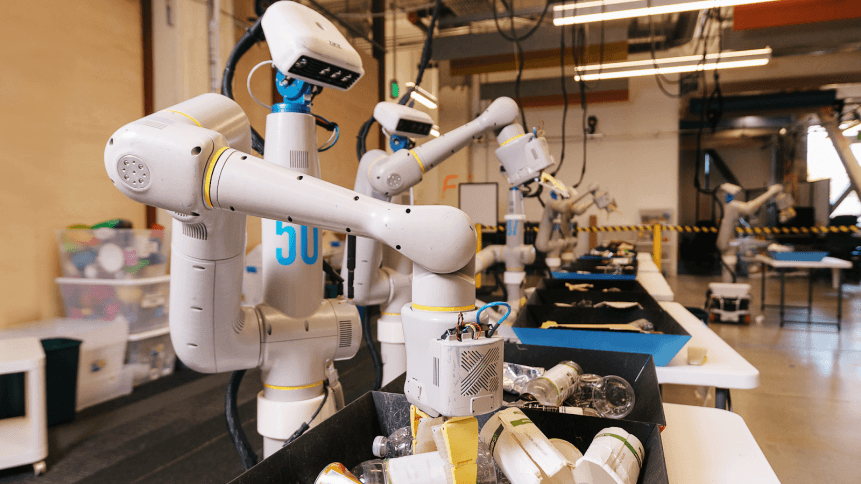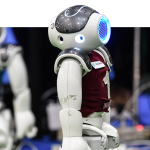No coding required? Alphabet working on self-learning robots

Google‘s parent company Alphabet has rebooted its robotics program– following a string of robotics acquisitions being put on ice– to see if robots can be ‘taught’ to complete everyday tasks.
It all started with trash— employees of X lab noticed waste not being sorted out properly and decided robots may be a solution to help sort through it. Like existing forms of robotics, the robots are programmed to perform a task. But not with code; with the help of artificial intelligence (AI) the robots ‘learn’ the task through practice, and observation of humans, or “shared experiences”.
In its blog post, X lab explained the notion of coding as the only way to program robots sets a limit to its capabilities.
“For robots to be useful in everyday environments, we need to move away from painstakingly coding them to do specific and structured tasks in exactly the right way at exactly the right time.
“We have concluded that you have to teach machines to perform helpful tasks; you cannot program them.”
While Alphabet said it would still be years before robots capable of self-training could be made available, the project yields early promise. Tasking its robots to sort through trash, the firm said office waste contamination dropped from 20 percent to less than 5 percent.
The positive result supports the potential of robots learning via simulation, reinforcement, and collaboration to perform every task in an unstructured environment, and that leaves room for many to speculate at the possibilities– with robots becoming as accessible to everyone, without the need for technical coding skills.
Learning on the job
In general, robots are programmed to carry out specific tasks. Adopted first on car production lines, movements and actions are pre-ordained, and even if there is a level of autonomy, such as the self-managing grid of 1,100 track-based robots used by online grocery retailer Ocado, decisions are based on prescribed algorithms, not ‘on-the-fly’.
But robots trained through simulation and learning provide more scope in their flexibility.
Sectors such as hospitality have demonstrated they are eager to explore how robotics can unburden staff from certain tasks. For example, robot butlers at Aloft Cupertino, in California, can deliver towels to guests at the poolside. Concierge-bots at Yotel in New York City are helping staff with retrieving luggage from storage spaces.
In the food industry, there are several advancements already with robots serving as waiter and bartender. One of the examples is Penny, a robot serving at Amici’s East Coast Pizzeria and is responsible for delivering food and drinks to the table as well as picking up dirty dishes.
At present, these applications are a fairly limited and, let’s face it, novel addition to businesses– they still require a lot of human assistance. But if versatile robots were produced that could effectively be taught new tasks on the job, it could spell the beginning of an era where ‘independent’ robots are commonplace in hotels, kitchens, warehouses, offices, or otherwise.
Advances here would be made viable by the emergence of 5G which could facilitate faster connections, allowing them to learn more quickly, and benefit from a wider-roaming range.
Ultimately, Alphabet’s venture in robotics and AI to train robots could pave the way to producing robotic assistants for the “everyday” masses. However, it’s under no illusions of the scale of the task that lies ahead in development.
“Our next challenge is to see if we can take what the robot learned in this task and apply that learning to another task without rebuilding the robot or writing a ton of code from scratch. This could prove to be impossible, but we’ll give it a shot,” the company wrote.










